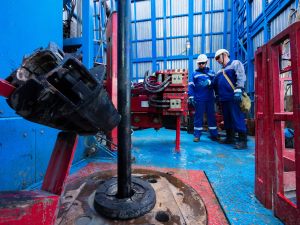Well productivity under seven-stage fracking proved to be 57 percent higher than at similar wells subject to standard multi-stage acid fracturing.
The Eastern block of the Orenburgskoye oil and gas-condensate field is one of the most complex fields under development by Gazprom Neft subsidiary Gazpromneft-Orenburg, in which high-viscosity oil is embedded within low-temperature low-permeability carbonate reservoirs. Acid fracturing has been used for enhanced oil recovery (EOR) at the field since 2013.
Well No. 1522 is located in the western part of the field, where reserves are categorised as hard-to-recover. Analysis of similar wells, brought into production after acid fracturing in this area, have shown significant drops in production over their first year of operation. In searching for a solution to this problem Gazpromneft-Orenburg geologists applied a new EOR fracking technique using both acid and proppant, tested and utilised with the support of the Gazprom Neft Science and Technology Centre.
* Hydraulic fracking involves the high-pressure injection of fluid into the bottom-hole zone (around the well ), resulting in the underlying formation (rock) cracking, and new fissures being formed and existing ones widened. In order to keep these fissures open, once fracking operations are complete a fixing agent (proppant) is pumped into the well, together with the fluid. The liquid that breaks down the underlying rock is known as “fracturing fluid”.
Classic acid fracturing is a means of hydraulic fracturing (fracking) in which acid alone is used as a fracturing fluid, causing fissures to become conductive by using acid to dissolve carbonate reservoirs. Once production begins the by-products of the acid’s reaction with the underlying rock are completely flushed from the well by the oil in place.
19 Декабря 2025 | пятница | 07:44


